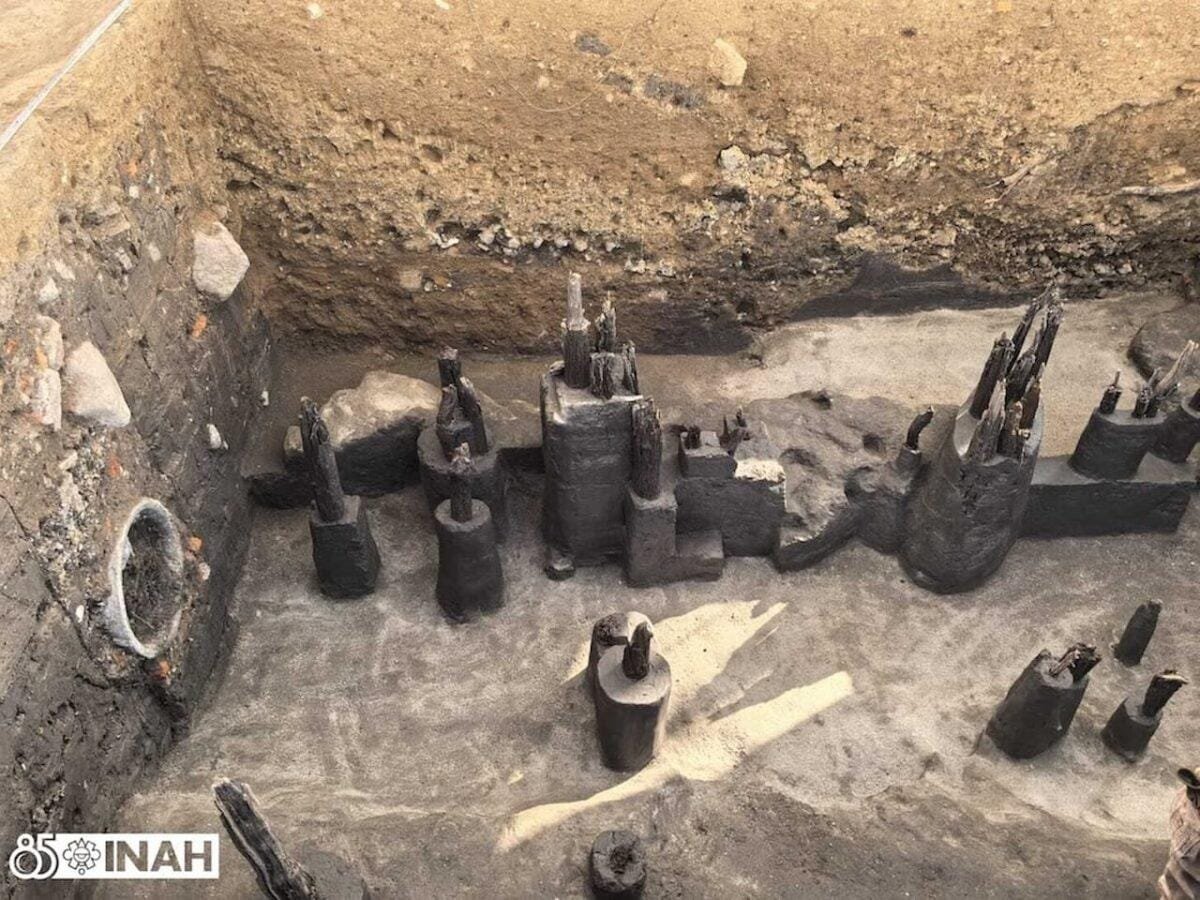Archaeologists from Mexico’s National Insтιтute of Anthropology and History (INAH) have uncovered the remnants of a pre-Hispanic dock and canal beneath the busy Chapultepec Avenue in Mexico City. The discovery lies near Chapulín Hill, where a natural river once flowed into the now-drained Lake Texcoco.
 The pre-Hispanic pier timbers discovered under Mexico City. Credit: Fabián González / INAH
The pre-Hispanic pier timbers discovered under Mexico City. Credit: Fabián González / INAH
The site, situated two meters below ground, reveals a hydraulic network that historians have linked to the mid-16th-century Uppsala Map, also known as the Santa Cruz Map. This map, which depicts Mexico City as the capital of New Spain, illustrates canoes and small vessels navigating the canal. According to María de Lourdes López Camacho, the project director, the best-preserved section of the canal, measuring 1.8 meters in width, was found near the Chapultepec Metro station. This area served as a link between aquatic and terrestrial routes commonly used in pre-Hispanic cities.
During pre-Hispanic times, it was an essential waterway for transportation and trade. After the Spanish conquest, it was repurposed as a drainage ditch in the early colonial period and later transformed into part of the Chapultepec aqueduct in the 18th century. “This discovery allows us to reconstruct part of the Valley of Mexico’s history, highlighting how waterways served as vital transportation and cultural exchange axes,” said López Camacho.
The dock’s structure features 40 transverse wooden pilings, ranging from 40 to 137 centimeters in height, made from fir wood known for its durability and resistance to water. Lead excavator Liliana Márquez Escoto noted that these pilings likely supported the arrival and departure of canoes to and from Lake Texcoco. Botanical remains, including seeds of quelites, squash, and tomatoes, were found alongside gastropods and roots.
A trove of artifacts was also unearthed at the site. These include Late Postclassic (AD 1200–1521) ritual ceramics, such as incense burners and solar-symbol vessels, which may have been part of offerings to the waterway. Early colonial items, including macuquinas (hammered coins) and green-glazed earthenware bearing seals from hospitals and religious orders, highlight the cultural transitions following the Spanish conquest.
The intensive urbanization of the region since the 19th century has posed challenges to site preservation. Despite this, the discovery beneath Chapultepec Avenue offers insights into the area’s transformation from a pre-Hispanic settlement to a bustling modern metropolis.
More information: INAH





